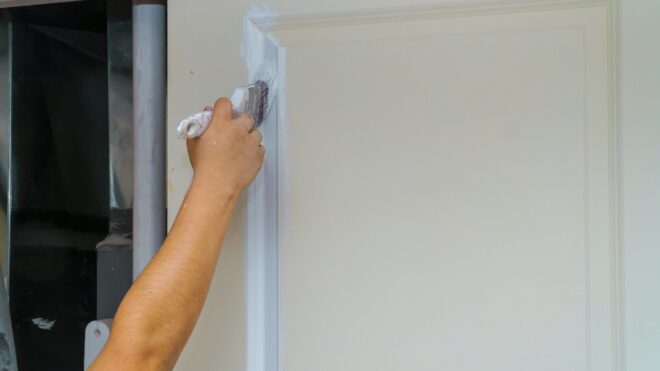Painting your home can be a satisfying DIY project, but it’s easy to make mistakes if you’re not careful. These errors can lead to a finish that doesn’t look quite right or doesn’t last as long as you’d like. But with the right guidance, you can avoid these common pitfalls.
Preparation is key to any successful paint job. Skipping this step can result in paint that peels or doesn’t stick well. It’s equally important to select the right type of paint and color for your project. Making smart choices ensures your surfaces look great and remain durable over time.
Paying attention to how you apply the paint makes a big difference in the final result. Even small techniques can lead to a smoother finish. Timing your painting is also crucial, as weather conditions can affect how your paint dries and cures.
By understanding these common painting mistakes and learning how to avoid them, you can achieve a polished, professional-looking finish that enhances your space.
Skipping Surface Preparation: Why It Matters
Surface preparation is a vital step in achieving a great paint finish. Neglecting it can lead to peeling, bubbling, or uneven results. Proper preparation ensures that the paint adheres well and has a smooth, professional look.
Start by cleaning the surfaces you’re planning to paint. Dirt, grease, and dust can prevent paint from sticking. Use a mild detergent with water to wash the walls, and let them dry completely before moving on to the next step.
Sanding is also important. Sanding surfaces makes them rough enough for the paint to grip. Use sandpaper to smooth out rough areas and to remove old, flaking paint. This step helps the new paint layer stay in place longer.
Another essential part of preparation is patching any holes or cracks. Fill these imperfections with spackle or filler, then sand them until they are even with the wall’s surface. This helps create a uniform finish.
Don’t forget to use primer on repaired or new surfaces. Primer provides an ideal surface for the paint to adhere to, improving the paint job’s longevity. Skipping this step might lead to issues like blotchy color or reduced paint durability.
Choosing the Wrong Paint: Color and Type
Choosing the right paint is crucial, and many people often make the mistake of selecting the wrong type or color. This choice can dramatically affect how your paint job looks and lasts.
First, consider the type of paint suitable for your project. Paint comes in different finishes like matte, eggshell, satin, semi-gloss, and gloss. Each finish has its strengths and is suited for specific areas. For instance, matte and eggshell finishes work well for low-traffic areas, while semi-gloss and gloss are more durable and better for high-traffic areas and trim.
Choosing the wrong paint type can lead to problems like easy staining or difficulty cleaning. So choose a type that suits the room’s purpose and the level of traffic it gets.
Selecting the right color is just as important. Look at the room’s size, lighting, and purpose when picking your shade. Test colors by applying small sections on the wall to see how they look under different lighting conditions.
For those uncertain about choosing a color:
- Neutral colors: Great for a classic and versatile look.
- Bold colors: Add personality to accent walls or small spaces.
- Soft tones: Use to create a calm and inviting atmosphere.
Making a thoughtful decision about paint type and color can lead to a more appealing and longer-lasting finish.
Poor Application Techniques: Tips for a Smooth Finish
Using the right techniques is crucial for a quality paint job. Common mistakes can lead to streaks, drips, and an uneven finish. With just a few adjustments, you can improve how your painted surfaces look and feel.
First, always mix your paint thoroughly. This ensures that the color and texture are consistent throughout and you avoid patchiness. Also, make sure to use high-quality brushes and rollers. Cheap tools can shed fibers, leaving an uneven surface. Choose the right tool for the job—angled brushes for corners and edges, and rollers for large, flat areas.
Don’t overload your brush or roller. Too much paint can cause drips and runs. Instead, apply thin coats and allow each layer to dry before adding another. This method builds a smooth finish without unsightly marks.
Maintain a wet edge while painting. Overlapping wet paint keeps edges from drying before the next pass. This technique prevents visible lines and creates a seamless appearance.
When painting, use steady, even strokes. Start at the top of the wall and work your way down, which helps catch drips as you move. Taking these simple steps will significantly improve your paint application and overall results.
Ignoring Weather Conditions: Timing Your Project Right
Weather plays a big role in paint drying and curing. Ignoring environmental factors can lead to a disappointing finish and shortened paint lifespan. Choosing the right timing can make your project more successful.
One important factor is temperature. Avoid painting when it’s extremely hot or cold. Ideal temperatures for painting are typically between 50°F and 85°F. High heat can cause paint to dry too fast, leading to cracks, while cold temperatures can prevent proper drying.
Humidity is another element to consider. High humidity slows down paint drying and can result in a sticky finish. Avoid painting right after heavy rains, as damp surfaces interfere with paint adhesion and cause peeling or bubbling.
Avoid windy days if you’re working outside. Wind can blow dirt and debris into wet paint, ruining the smooth finish and causing additional work to fix it.
Plan your project with these weather tips in mind:
- Check forecasts: Avoid extreme temperatures and rainy days.
- Choose a window: Aim for moderate weather days with low humidity.
- Monitor conditions: Be flexible and adjust your timing as needed.
By considering weather conditions, you’ll ensure your paint dries properly and forms a durable, flawless layer.
Conclusion
Avoiding the common mistakes of surface preparation, paint selection, application techniques, and weather awareness can dramatically improve the outcome of your painting project. By taking the time to plan and execute your painting with these guidelines in mind, you can achieve results that enhance your home’s appearance and longevity.
Ready to transform your space without fear of making the same old mistakes? With Braendel Painting, Inc., you can trust that your painting project is in good hands. Our team of professional house painters is dedicated to delivering outstanding results, whether you’re updating a single room or tackling your entire home.
Let’s work together to make your space look fresh and new. Contact us today and see the difference expertise can make!

